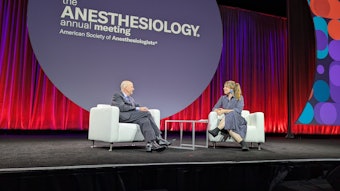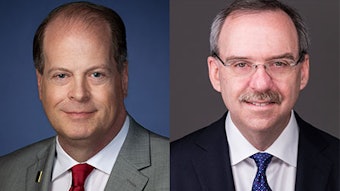Anesthesiology’s increasing reliance on locums staffing
Experts explore the challenges and remedies for maintaining patient safety.

Hindsight is 20/20. That’s a concept anesthesiologists take seriously, regularly applying a robust system of prospective analysis and retrospective assessment of past adverse events to improve patient safety.
Yet, as the health care landscape continues to evolve, anesthesiology departments across the United States are grappling with the growing challenge of maintaining the highest level of patient safety amid an increasing reliance on locum tenens clinicians. The Monday session, “Navigating Patient Safety in a Locums-Driven World,” explores what happens when a significant portion of the anesthesia clinical staff is from a locums staffing agency and lacks familiarity with the hospital’s schedules, systems, policies, and other vital information.
“Retrospective analysis of adverse events looks at what went wrong when something bad happens during clinical care,” said session panelist George Tewfik, MD, MBA, FASA, Associate Professor of Anesthesiology at Rutgers University School of Medicine in Newark, New Jersey. “Often, it includes the reconstruction of a timeline of events leading up to the adverse event and attempting to determine where the error occurred, the underlying contributing factors, and possible interventions to address the issues.”
Conversely, Dr. Tewfik said, prospective analysis of adverse events looks at processes that are in place, or will be put into place, and attempts to determine where errors may occur. It’s that unfamiliarity with hospital and departmental processes that adds to the challenge, he said.
Keep in mind, he said, that locums clinicians are limited in the opportunity to participate in the hospital’s clinical governance, scope-of-practice effects, and exchange of information. Plus, they are often deployed in understaffed departments where safety culture/processes may have broken down.
“Maintaining patient safety is hard under optimal circumstances, with a regular workforce of clinicians, requiring combinations of policies, procedures, education, and reinforcement (among countless other tools) in the best of times,” said session panelist Jennifer Feldman-Brillembourg, MD, a locums/PRN Anesthesiologist with Sibley Memorial Hospital and Howard University Hospital, both in Washington, D.C. “With a workforce that is increasingly constructed of locums clinicians, leaders in anesthesia departments must understand that other strategies may need to be implemented to maintain safety. Different considerations may need to be provided, such as limiting their practice locations in a health care facility to ensure familiarity with medical environments.”
These challenges can undermine safety protocols and delay critical responses, especially in high-stakes environments like trauma centers. According to Uma Munnur, MD, MBBS, however, it is possible to turn these challenges into opportunities. Dr. Munnur is Professor of Anesthesiology at Baylor College of Medicine in Houston.
She emphasized that locums staff can serve as a catalyst for improvement. Their fresh perspective may help identify overlooked safety gaps and reinforce institutional standards — if properly supported.
She suggested these strategies:
- Site-specific orientation to reduce unfamiliarity
- Limited deployments to ensure consistency
- Mandated compliance systems, like checklists
- Clear delineation of responsibilities
- Cognitive aids to enhance communication.
“Working in a level one trauma center with countless practice locations, I’ve found that the hardest thing to deal with is often the lack of familiarity with one’s surroundings,” Dr. Munnur said. “In anesthesiology, especially in emergencies, sometimes a significant contributing factor to the outcome of a patient scenario is simply knowing what resources are available in what locations. When a locums clinician carries the emergency airway beeper, they need extensive education to ensure that they respond in a timely fashion.”
Session moderator Lisa Bethea, MD, an Anesthesiologist with Moffitt Cancer Center in Tampa, Florida, said she always asks if the locums CRNA has been at the site before. If not, she arrives early to walk them through the space and review safety essentials.
Ultimately, each of the panelists said clear communication remains a critical piece of remedying the challenge. Locums clinicians often miss departmental emails, grand rounds, and policy updates. Panelists agreed it’s important for department leaders to adopt multichannel communication strategies. These can include emails, signage, EHR alerts, and in-person briefings to ensure locums are informed and aligned with safety protocols.
“Patient safety must remain a top priority, even as staffing models shift. With locums clinicians becoming a fixture in many institutions, anesthesiology leaders must adapt, innovate, and remain vigilant,” Dr. Bethea said. “Recognizing and addressing the unique challenges posed by a transient workforce is essential for maintaining high safety standards.”











